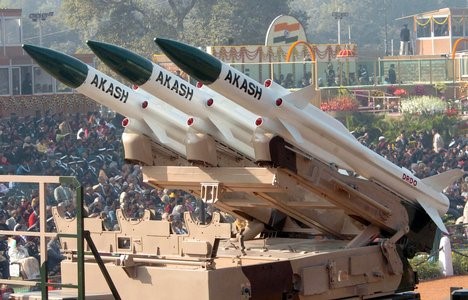 Metaphors and analogies are useful literary devices to prompt reaction and discussion. My weak attempt to borrow Aesop’s fable about the tortoise and the hare, and to apply it to the nuclear competition on the subcontinent, seems to have had its intended effect. Had Aesop written a fable about the dragon and the elephant, I would have borrowed this device, as well.
Metaphors and analogies are useful literary devices to prompt reaction and discussion. My weak attempt to borrow Aesop’s fable about the tortoise and the hare, and to apply it to the nuclear competition on the subcontinent, seems to have had its intended effect. Had Aesop written a fable about the dragon and the elephant, I would have borrowed this device, as well.
The weaknesses of my analogy have been readily identified - most tellingly the triangular, action-reaction character of this competition. As hard and fast as the US-Soviet nuclear competition was, in some respects it was easier to defuse than the China-India-Pakistan competition. There was a rough symmetry of top-line force levels, a hard-earned acceptance of transparency and intrusive monitoring, an acknowledgement after the Berlin and Cuban missile crises not to play with fire in each other’s backyards, and a readiness to try to structure the competition through formalised agreements. Even so, Washington and Moscow did not break the back of their nuclear competition until risk-taking leaders assumed power in both countries, and until the Soviet Union’s economy and political coherence began to crater.
Beijing, New Delhi and Islamabad/Rawalpindi share some of the same difficulties in stabilising their nuclear competition with Washington and Moscow. There is a familiar pattern of a lack of enthusiasm by diplomats to tackle nuclear risk reduction, scepticism by national security establishments, and distracted political leaders. In addition, there is the novel problem of stabilising a triangular competition without structural content, as formal agreements are unlikely. Geometrically speaking, a triangular hierarchy is harder to stabilise than one between two superpowers. “Our” spoilers worked an insider game, operating within the bureaucracy and on Capitol Hill. Your spoilers attack government buildings and five-star hotels.
So, yes, quite obviously, the analogy of a two-party competition, a winner and a loser, and a finish line are not analytically sound for South Asia. Still, these answers seem too pat, too simple, and too well rehearsed. The difficulties go deeper, making stabilisation measures even more difficult. To be sure, China factors significantly in Indian military requirements. What’s missing in most Indian strategic assessments, until recently, is that Pakistan refuses to accept the status of India’s lesser-included case. India’s strategic community has difficulty accepting this circumstance, preferring to believe Pakistan can only complete this successfully with Chinese help. This was abundantly true during the early phases of Rawalpindi’s quest for a nuclear deterrent. Clinging to this assumption now, when available evidence suggests otherwise, underestimates the Pakistan military establishment’s willingness to pay for, and the Pakistani defence production establishment’s ability to deliver, a widely diversified and growing set of nuclear capabilities. Pakistan is the hare because it works harder to compete than India, and because it has fewer political impediments to do so.
Nuclear competitions do not have winners, whether they are two-party or three-party affairs. Winners have strong and growing economies. Winners have domestic cohesion. Nor do nuclear arms competitions have finish lines. One new requirement simply leads to the next. It takes great political and diplomatic exertions to put in place nuclear risk-reduction measures. So far, leaders in China, India, and Pakistan have not been up to this task.
Courtesy : Institute of Peace and Conflict Studies (http://www.ipcs.org)